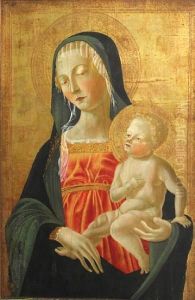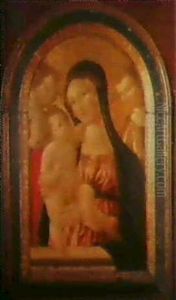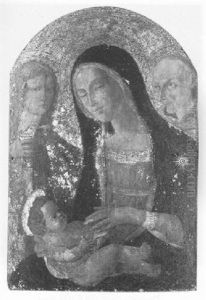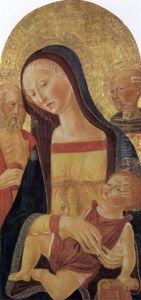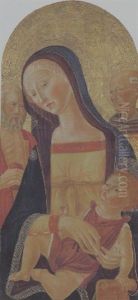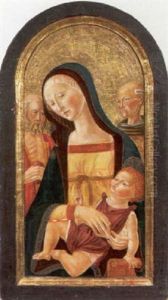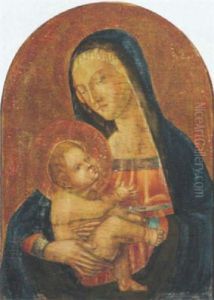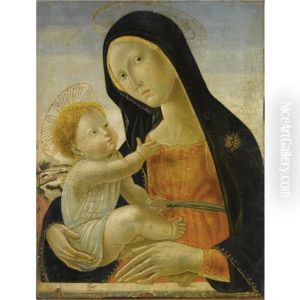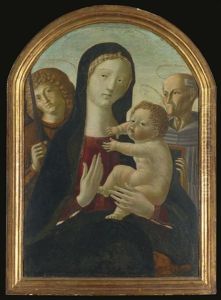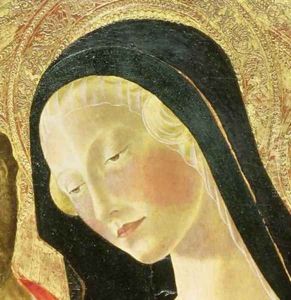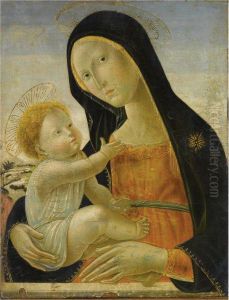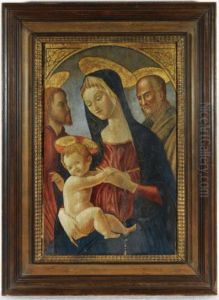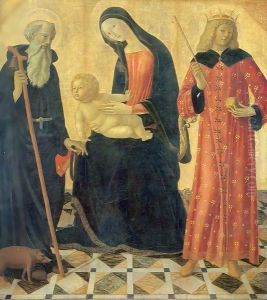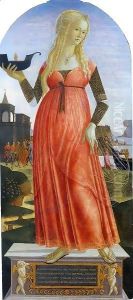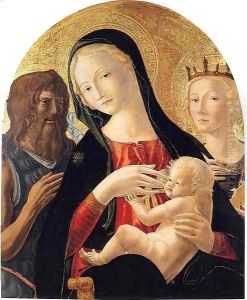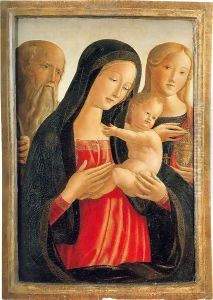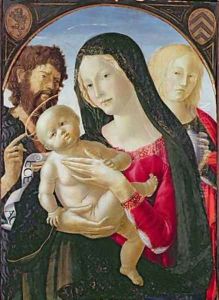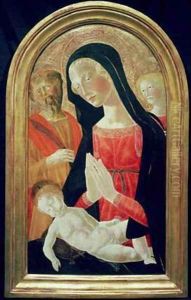Neroccio di (Neroccio da Siena) Landi Paintings
Neroccio di Bartolomeo de' Landi, commonly known as Neroccio di Siena, was an influential Italian painter, sculptor, and goldsmith active during the Renaissance period. Born in 1447 in Siena, Italy, he emerged from a city renowned for its rich artistic tradition, rivaling even that of Florence during the 15th century. Neroccio's contributions to the Sienese School of painting are significant, characterized by his devotion to detail, delicate coloring, and the serene, ethereal quality of his figures.
Neroccio was apprenticed to Vecchietta, a versatile Sienese artist, which provided him a solid foundation in painting, sculpture, and goldsmithing. His career took a pivotal turn when he formed a partnership with Francesco di Giorgio in 1468. This collaboration lasted for about ten years, during which they worked on numerous commissions, significantly influencing each other's styles and techniques. Although the partnership eventually dissolved, it was a period of great productivity and creativity for Neroccio.
As a solo artist, Neroccio's work continued to evolve, showcasing his remarkable ability to blend traditional Sienese elements with the emerging Renaissance ideals of humanism and naturalism. His paintings often feature serene Madonnas, saints, and angels, depicted with grace and elegance against detailed landscapes or architectural backgrounds. One of his most celebrated works is the 'Madonna and Child with Saints,' which exemplifies his meticulous attention to detail and his skill in creating a harmonious, devotional atmosphere.
Neroccio was also a talented sculptor, although fewer of his sculptures survive. His work in this medium demonstrates a similar sensitivity and refinement seen in his paintings. In addition to his artistic endeavors, he was involved in the political life of Siena and held several public offices, reflecting the high regard in which he was held by his contemporaries.
Neroccio di Landi's contributions to the art world continued until his death in 1500. His legacy is that of a master who perfectly captured the essence of the Sienese spirit, combining devout spirituality with the burgeoning Renaissance interest in humanism and the natural world. Through his paintings and sculptures, Neroccio has left a lasting impact on the history of art, embodying the transition from the Gothic to the Renaissance and influencing generations of artists who followed.
